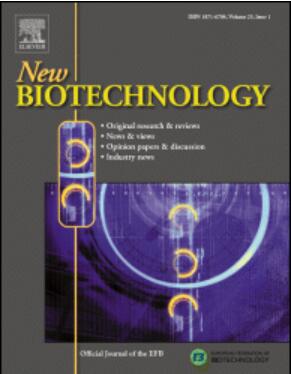利用新型双酶消化法提高子宫腺肌病子宫平滑肌细胞的纯化率
IF 4.9
2区 生物学
Q1 BIOCHEMICAL RESEARCH METHODS
引用次数: 0
摘要
子宫腺肌病引起的异常平滑肌层近来受到越来越多的关注,这就需要一种能在实验室环境中有效收集高纯度子宫平滑肌细胞(USMC)的方法。在这项研究中,我们探讨了消化液的成分比例,以获得最佳消化液(DM4)。此外,我们还通过比较 DM4 与传统组织粘附法的生长速度、单细胞 RNA 测序和荧光鉴定纯度,测试了两种获得子宫腺肌症子宫平滑肌方法的优劣。结果表明,与更倾向于分离祖细胞群的组织粘附法相比,DM4消化法产生的USMC细胞的增殖率明显更高,更能产生高纯度的成熟平滑肌细胞。这项研究提出了一种分离 USMC 的可靠方法,为今后研究子宫腺肌症的病因和机制奠定了坚实的基础。本文章由计算机程序翻译,如有差异,请以英文原文为准。
Enhanced purification of uterine smooth muscle cells from adenomyosis using a novel dual-enzyme digestion method
Uterine adenomyosis causing attention to the abnormal smooth muscle layer has recently received increasing attention, which has created the need for a method that can efficiently collect high purity uterine smooth muscle cells (USMC) in a laboratory setting. In this study, we explored the composition ratios of the digestion solution to obtain the optimal digestion solution (DM4). Furthermore, we tested the superiority of the two methods of obtaining adenomyotic uterine smooth muscle by comparing DM4 with the conventional tissue adhesion method by growth rate, single-cell RNA sequencing, and purity of fluorescence identification. The results demonstrated that USMCs produced by the DM4 digestion method exhibited significantly higher rates of proliferation and were more effective in generating mature smooth muscle cells of high purity compared to those obtained using tissue adherence methods, which is more inclined to isolate the progenitor cell population. This study presents a reliable method for isolating USMCs and provides a solid foundation for future studies on the etiology and mechanism of adenomyosis.
求助全文
通过发布文献求助,成功后即可免费获取论文全文。
去求助
来源期刊

New biotechnology
生物-生化研究方法
CiteScore
11.40
自引率
1.90%
发文量
77
审稿时长
1 months
期刊介绍:
New Biotechnology is the official journal of the European Federation of Biotechnology (EFB) and is published bimonthly. It covers both the science of biotechnology and its surrounding political, business and financial milieu. The journal publishes peer-reviewed basic research papers, authoritative reviews, feature articles and opinions in all areas of biotechnology. It reflects the full diversity of current biotechnology science, particularly those advances in research and practice that open opportunities for exploitation of knowledge, commercially or otherwise, together with news, discussion and comment on broader issues of general interest and concern. The outlook is fully international.
The scope of the journal includes the research, industrial and commercial aspects of biotechnology, in areas such as: Healthcare and Pharmaceuticals; Food and Agriculture; Biofuels; Genetic Engineering and Molecular Biology; Genomics and Synthetic Biology; Nanotechnology; Environment and Biodiversity; Biocatalysis; Bioremediation; Process engineering.
 求助内容:
求助内容: 应助结果提醒方式:
应助结果提醒方式:


